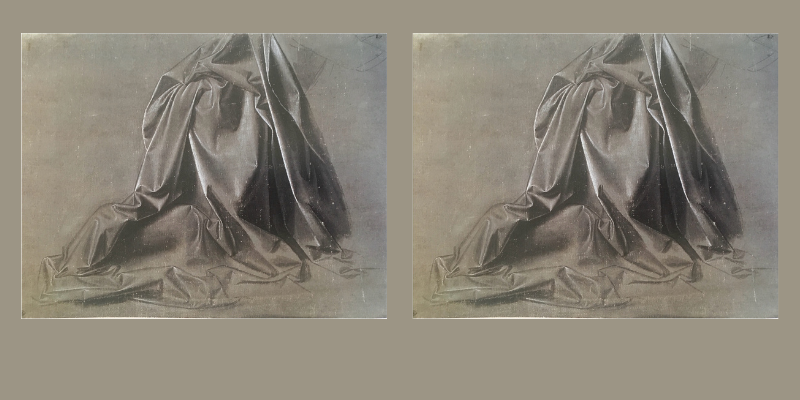
The poiesis of drapery in Italian Art 1400-1520 Dr Amanda Hilliam, I Tatti, the Harvard University Center for Italian Renaissance Studies
Event details
History of Art Research Seminar
Drapery – understood as the representation of freefalling cloth over the body as distinct from tailored clothing – wielded considerable rhetorical power in the art of Renaissance Italy. Occupying substantial space in many works of art, and taking up corresponding amounts of time dedicated to its study and facture, drapery, in its malleability, presented particular opportunities for authorial assertion and narrative interlacement, and yet has received limited art-historical attention.
This research seminar foregrounds drapery as a key site through which Italian Renaissance artists conceptualised and materialised the creative process in relation to natural poiesis, or emergence, a coming into being. It will propose that makers recognised nature’s generative intelligence when going about constructing artful folds, whether by adopting morphological structures found, for example, in rock formations or the branches of a tree, or borrowing from the motions of water, clouds and hair as a way of breathing life into inanimate cloth. Part of a larger book project dedicated to drapery’s eloquence, this research focuses on drapery as a form of visual knowledge that differed from systems of proportion and optics developed during the Renaissance. Unlike anatomy or perspective, drapery was a visual system based on contingency and chance, and was also subject to an artist’s own distinctive way of working materials and method of figuration. Drapery, as such, was an alternative means of bringing life-like qualities to pictorial representation and a key locus of subjective attitudes towards art and nature, providing information about invisible forces (gravity, wind, light, and human emotion – what Aby Warburg called “the external causes of the image”) that enhanced the viewer’s sensory perceptions of a work of art.
Image credit: Leonardo, drapery study for a kneeling figure in profile view, ca. 1470-5. Brush with brown ink wash, gray tempera, and white gouache, on gray-brown prepared linen, 20.6 x 28.1 cm. Paris, Musée du Louvre, Département des Arts Graphiques 2256.